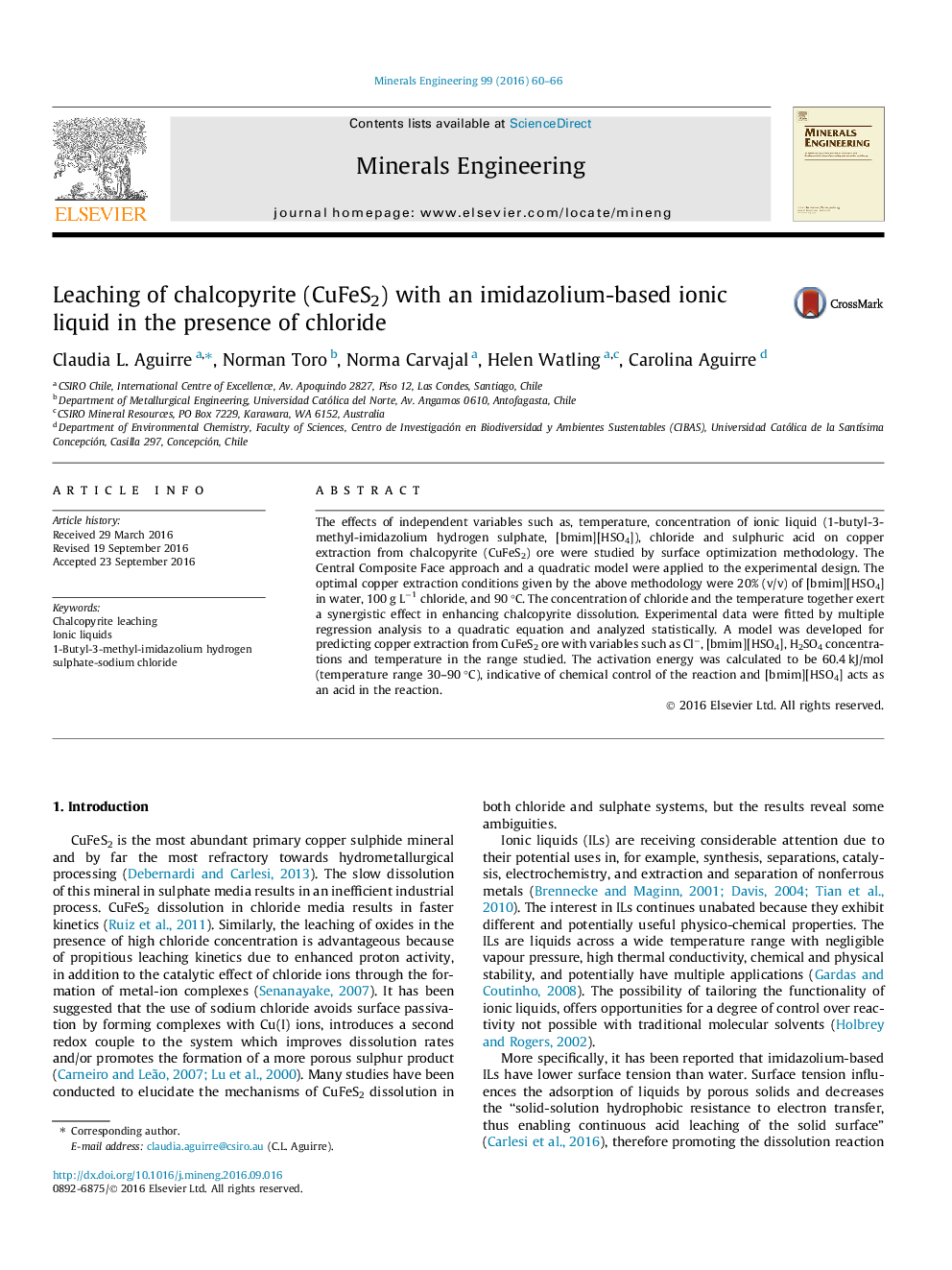| Article ID | Journal | Published Year | Pages | File Type |
|---|---|---|---|---|
| 4910307 | Minerals Engineering | 2016 | 7 Pages |
Abstract
The effects of independent variables such as, temperature, concentration of ionic liquid (1-butyl-3-methyl-imidazolium hydrogen sulphate, [bmim][HSO4]), chloride and sulphuric acid on copper extraction from chalcopyrite (CuFeS2) ore were studied by surface optimization methodology. The Central Composite Face approach and a quadratic model were applied to the experimental design. The optimal copper extraction conditions given by the above methodology were 20% (v/v) of [bmim][HSO4] in water, 100 g Lâ1 chloride, and 90 °C. The concentration of chloride and the temperature together exert a synergistic effect in enhancing chalcopyrite dissolution. Experimental data were fitted by multiple regression analysis to a quadratic equation and analyzed statistically. A model was developed for predicting copper extraction from CuFeS2 ore with variables such as Clâ, [bmim][HSO4], H2SO4 concentrations and temperature in the range studied. The activation energy was calculated to be 60.4 kJ/mol (temperature range 30-90 °C), indicative of chemical control of the reaction and [bmim][HSO4] acts as an acid in the reaction.
Keywords
Related Topics
Physical Sciences and Engineering
Chemical Engineering
Chemical Engineering (General)
Authors
Claudia L. Aguirre, Norman Toro, Norma Carvajal, Helen Watling, Carolina Aguirre,
